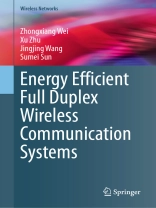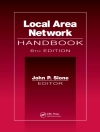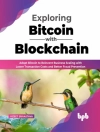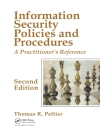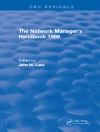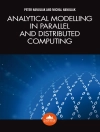In an effort to overcome the spectral efficiency loss and high latency by half-duplex (HD), full-duplex (FD) has attracted extensive attention in industry and academia. With signal transmitted and received simultaneously over the same frequency, FD can approximately double the SE over HD. More than that, by enabling the capability of simultaneous transmission-and-reception for communication nodes, full duplex (FD) is a key enabler for many 5G techniques, including but not limited to integrated sensing and communication, low-latency relaying, concurrent bi-directional uplink and downlink transmission, ect. Nevertheless, in FD communications, both transmit and receive radio frequency (RF) chains are activated for exchanging data, and additional power is triggered by self-interference cancellation. As FD requires much higher power consumption than that of half duplex (HD), it is against the green evolution requirement proposed by the future communication systems.
To address the critical high-power challenge in applying FD communications, this book will introduce the fundamentals and algorithm designs for energy-efficient FD design. This book will first discuss the principle of energy-efficient communications, which aims to make a good balance between communication performance and system energy consumption. Then, this book will discuss different self-interference cancellation schemes, including passive suppression, analogue cancellation and digital cancellation for FD communications, from the prospective of energy efficiency. Subsequently, this book will present some edge-cutting energy efficiency-oriented FD solutions, including adaptive transmission power adaptation, wireless power transfer FD relaying, bi-directional FD distributed antenna systems, from the perspective of algorithm design and performance analysis.
قائمة المحتويات
Chapter 1. Fundamentals of Full Duplex Communications.- Chapter 2. Energy Efficient Bi-Directional FD Distributed Antenna Systems.- Chapter 3. Energy Efficient Wireless-Powered Full-Duplex Relaying Communications.- Chapter 4. Energy-Efficient Full-Duplex Cooperative Non-orthogonal Multiple Access.- Bibliography.
عن المؤلف
Zhongxiang Wei received the Ph.D. degree in electrical and electronics engineering from the University of Liverpool, Liverpool, U.K., in 2017. From March 2016 to March 2017, he was a Research Assistant with the Institution for Infocomm Research, Agency for Science, Technology and Research, Singapore. From March 2018 to March 2021, he was a Research Associate with the Department of Electrical and Electronics Engineering, University College London. He is currently an Associate Professor with the College of Electronic and Information Engineering, Tongji University, China. He has authored or co-authored more than 80 research papers published on top-tier journals and international conferences. His research interests include anonymous communications, constructive interference designs, and MIMO communications. He has been a session/track chair of various international flagship conferences, such as IEEE ICC, GLOBECOM, and ICASSP, and a guest editor for IEEE INTERNET of THINGS JOURNAL. He was a recipient of the Shanghai Leading Talent Program (Young Scientist) in 2021, the Outstanding Self-Financed Students Abroad in 2018, and the A*STAR Research Attachment Program (ARAP) in 2016.
Xu Zhu received the B.Eng. degree (Hons.) in electronics and information engineering from the Huazhong University of Science and Technology, Wuhan, China, in 1999, and the Ph.D. degree in electrical and electronic engineering from The Hong Kong University of Science and Technology, Hong Kong, in 2003. She was a Reader with the Department of Electrical Engineering and Electronics, University of Liverpool, Liverpool, U.K. She is currently a Professor with the School of Electronic and Information Engineering, Harbin Institute of Technology, Shenzhen, China. She has more than 210 peer-reviewed publications on communications and signal processing. Her research interests include MIMO, channel estimation and equalization, ultra reliable low latency communication, resource allocation, and cooperative communications. She was a recipient of the Best Paper Award from the IEEE GLOBECOM 2019. She has acted as the Chair of various international conferences, such as the Vice-Chair of the 2006 and 2008 ICARN International Workshops, the Program Chair of ICSAI 2012, the Symposium Co-Chair of IEEE ICC 2016, ICC 2019, and GLOBECOM 2021, and the Track Co-Chair of IEEE WCNC 2022. She has served as an Editor for the IEEE Transactions on Wireless Communications and the Guest Editor for several international journals, such as Electronics. She is a 2022 Distinguished Lecturer of the IEEE Vehicular Technology Society.
Jingjing Wang received his B.Sc. degree in electronic information engineering from the Dalian University of Technology, Liaoning, China in 2014 and the Ph.D. degree in information and communication engineering from the Tsinghua University, Beijing, China in 2019, both with the highest honors. From 2017 to 2018, he visited the next generation wireless group chaired by Prof. Lajos Hanzo in the University of Southampton, UK. Dr. Wang is currently a Professor at the School of Cyber Science and Technology, Beihang University, Beijing, China. His research interests include AI enhanced next-generation wireless networks, UAV networking and swarm intelligence. He has published over 100 IEEE Journal/Conference papers. He is currently serving as an Editor for the IEEE Wireless Communications Letter and the IEEE Open Journal of the Communications Society. He has served as a Guest Editor for IEEE Internet of Things Journal. Dr. Wang was a recipient of the Best Journal Paper Award of IEEE Com Soc Technical Committee on Green Communications & Computing in 2018, the Best Paper Award of the IEEE ICC and the IEEE IWCMC in 201
Sumei Sun is currently a Distinguished Institute Fellow and the Acting Executive Director of the Institute for Infocomm Research (I2R), Agency for Science, Technology, and Research (A*STAR), Singapore. Her current research interests include next-generation wireless communications, cognitive communications and networks, and the Industrial Internet of Things. She is the Editor-in-Chief of IEEE OPEN JOURNAL OF VEHICULAR TECHNOLOGY, the Chair of IEEE TRANSACTIONS ON MACHINE LEARNING IN COMMUNICATIONS AND NETWORKING Steering Committee, a member of the board of governors of the IEEE Vehicular Technology Society, and the Member-at-Large of IEEE Communications Society.
